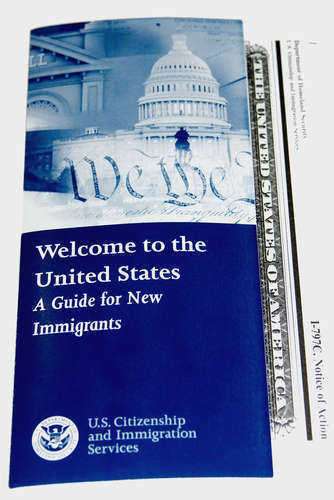
Understanding the Immigration Law Handbook
Introduction:
The issue of immigration law has become a primary concern for many countries around the globe, and governmental bodies are continuously updating and reviewing their immigration laws. The Immigration Law Handbook is an essential guide that aids in understanding the legal aspects of immigration and provides a comprehensive guide for immigrants and lawyers. This article aims to unpack the purpose of the Immigration Law Handbook and how it can be beneficial to both immigrants and legal practitioners alike.
Purpose of the Immigration Law Handbook:
The primary purpose of the Immigration Law Handbook is to provide a clear understanding of the legal framework that governs immigration policy today. It is a comprehensive guide designed to help immigrants understand the legal requirements and obligations they must meet to obtain lawful status in a country. The Handbook also functions to help immigration lawyers navigate the complex legal landscape and properly represent their clients.
Structure of the Handbook:
The Immigration Law Handbook is divided into three parts. Part one outlines the fundamental principles, concepts, and policies underpinning the immigration law. Part two covers various immigration categories, such as family immigration, employment-based immigration, and asylum. Part three discusses the procedures, rules, and standards that govern immigration proceedings.
Benefits of the Immigration Law Handbook:
One of the significant benefits of the Immigration Law Handbook is that it provides clear and concise explanations of complex legal concepts. This makes it easier for individuals to understand their legal rights and obligations regarding immigration law, which, in turn, helps to avoid mistakes that can complicate their application process.
Another advantage of the Handbook is that it provides detailed information on the different types of visas and how they can be applied for. This helps immigrants to determine the best path for obtaining legal status in a particular country, depending on their circumstances.
Finally, the Immigration Law Handbook can be helpful for lawyers who specialize in immigration law. It provides a comprehensive reference guide for complex legal issues that may arise in immigration cases.
Conclusion:
Immigration Law can be incredibly challenging to navigate, particularly in countries like the United States, where the laws continually change. The Immigration Law Handbook is a useful resource that can help immigrants and legal practitioners understand the laws that affect them. It is a concise, comprehensive, and invaluable resource that provides a detailed guide on all matters of immigration law.
Dictionary definitions – For the casual reader, an immigration law handbook will be a Rosetta Stone of a foray into federal immigration law. A good handbook will include a list of terms that will be unfamiliar to the first-time reader, but even for the seasoned veteran, a handbook on immigration law will provide a quick point of reference without having to employ tedious memorization or one’s own messy list of names that are not guaranteed to be accurate. While it should not be used as a bona fide replacement for an federal immigration law specialist, a legal dictionary should be a standard of any law student’s library.
Notes to the reader – It goes without saying that law is a field in which strategy is often critical. Ideally, a good immigration law handbook will be both user-friendly and valuable to legal professionals. In terms of the former, while filing petitions without legal counsel is a true risk, the expense of that legal counsel may be a deal-breaker for some, and so highlighted strategy sections are a good resource. This may be especially helpful since the language of federal immigration law, as with legal language as a whole, can be hard to penetrate.
Country-by-country restrictions – As different visas are meant for different purposes, and foreign visas are usually involved when people travel from country to country. It would be wise to understand if there are exceptions to the rule on types of visas. A good immigration law handbook will spell out when certain visas may or may not apply, especially as visa rules may be reciprocal between countries.
This means that Nation A’s restrictions on the citizens of B might also be enforced on the denizens of Nation A by Nation B. As some nations do not issue travel visas or may not require the issuance of visas short visits, it is wise to look at the law of other nations. Of course, one will want to make sure to have a handbook that deals specifically with American federal immigration law.

























